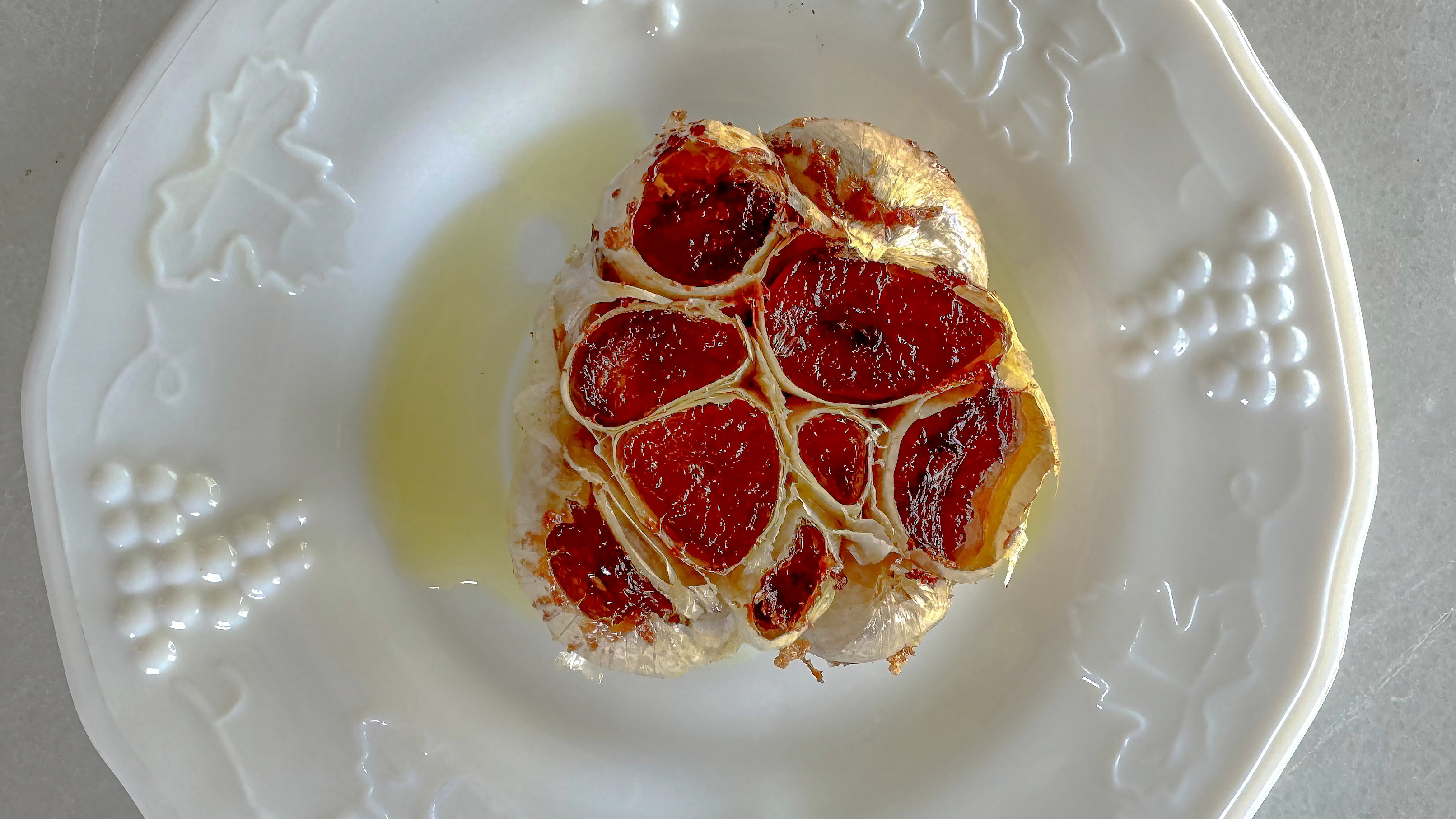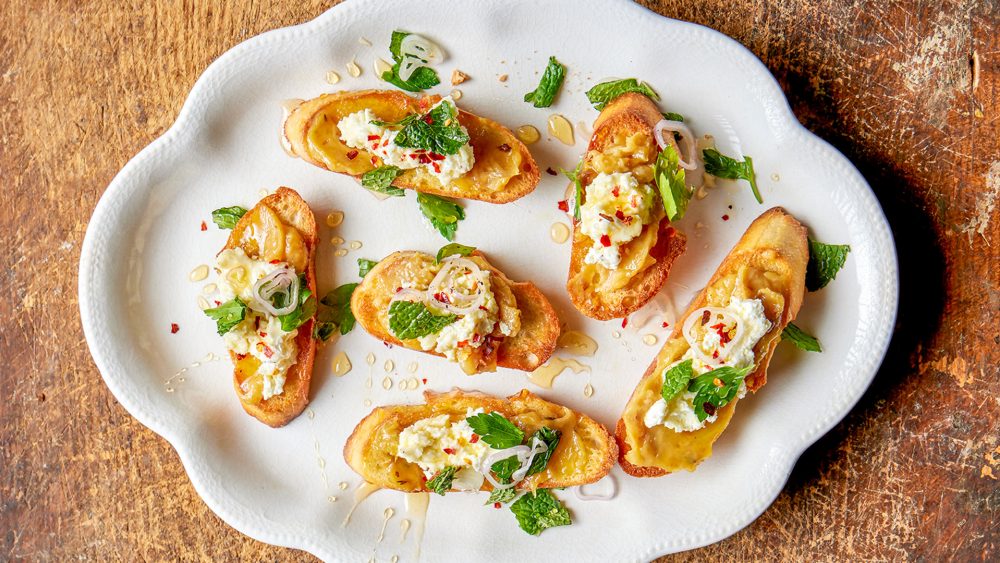What is garlic confit?

No longer needed for preservation, confit persists because it gets delicious results. In the case of garlic confit, the harsh allium pungency and sharp bite is tempered by a low, slow cook, leaving spreadable, buttery cloves behind. It’s much sweeter than fresh garlic, with a deeper, rounder, almost caramelized flavor, and only a hint of the original pungency. Spread it on toasted baguette and sprinkle on some flaky salt and you have near-instant, perfect garlic bread. (And, as a bonus, you get garlic-infused oil.)
The method is so simple, you don’t really need a recipe. Just submerge the cloves in olive oil and let them cook over low heat until soft, golden-brown, and spreadable. For our version, we keep things hands-off and roast whole heads in a loaf pan with a cup of olive oil, a bay leaf, and a few sprigs of thyme.
Tangy goat cheese and fresh mint make it even better
Unless you’re talking about a crispy layer of broiled Parmesan or pecorino, cheese rarely makes an appearance on garlic bread, usually because it distracts from the garlic. Leafy herbs are even rarer, and mint is practically unheard of. But at the dearly departed Robert restaurant in Paris’ 11th arrondissement, editorial director J.M. Hirsch encountered a garlic bread that broke those unspoken rules. “I was surprised to find that the chef, Jack Bosco Baker, had taken a fresh approach to this Italian American favorite by starting off with a skillet confit of garlic,” he writes. “The griddled bread also got a schmear of fresh goat cheese and honey and a topping of minty herb salad. At Robert, diners are asked to squeeze out the soft, unctuous cloves on their own for a do-it-yourself affair.”The two ingredients may sound unusual, blasphemous even, but they make sense with garlic confit. Tangy goat cheese balances the richness of the fat-roasted cloves; Mint provides an invigorating bite that keeps your palate from nodding off. We took things even further when creating our version of the griddled confit-smeared bread, adding shallots and parsley to the mint and lemon zest to the goat cheese, keeping the final drizzle of honey to tie it all together. It has pretty much every texture and flavor you could want in a single bite—buttery soft, pleasantly crunchy, fresh, savory, fatty, tangy and sweet.
And while our recipe takes the form of pre-assembled toasts, it can be fun (and interactive) to place the bread on a platter and offer each of the components in its own serving dish, then let diners build their own. You can even give each guest their very own head—a move that would be ill advised (if not downright irresponsible) if you were making it with raw garlic. Confit may have been invented with food safety in mind, but it certainly lends itself well to decadence.
Join the conversation on Facebook, Instagram, TikTok and Pinterest.
And if you're looking for more Milk Street, check out our livestream cooking classes with our favorite chefs, home cooks and friends for global recipes, cooking methods and more.








